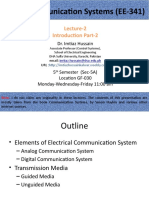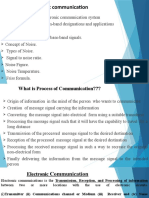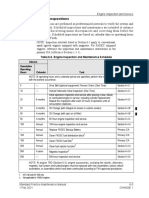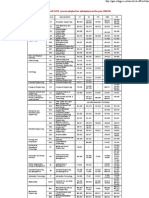0% found this document useful (0 votes)
20 views19 pagesBESCK204C Module - 5 E - Notes
Module 5 covers the fundamentals of analog and digital communication systems, including the components of a communication system such as transducers, transmitters, channels, and receivers. It discusses types of signals, modulation techniques (AM, FM, digital), and the importance of noise management and multiplexing for efficient communication. Additionally, it explains radio wave propagation methods and the advantages of different communication systems based on physical infrastructure and signal specifications.
Uploaded by
likithkiran200516Copyright
© © All Rights Reserved
We take content rights seriously. If you suspect this is your content, claim it here.
Available Formats
Download as PDF, TXT or read online on Scribd
0% found this document useful (0 votes)
20 views19 pagesBESCK204C Module - 5 E - Notes
Module 5 covers the fundamentals of analog and digital communication systems, including the components of a communication system such as transducers, transmitters, channels, and receivers. It discusses types of signals, modulation techniques (AM, FM, digital), and the importance of noise management and multiplexing for efficient communication. Additionally, it explains radio wave propagation methods and the advantages of different communication systems based on physical infrastructure and signal specifications.
Uploaded by
likithkiran200516Copyright
© © All Rights Reserved
We take content rights seriously. If you suspect this is your content, claim it here.
Available Formats
Download as PDF, TXT or read online on Scribd
/ 19



























































































